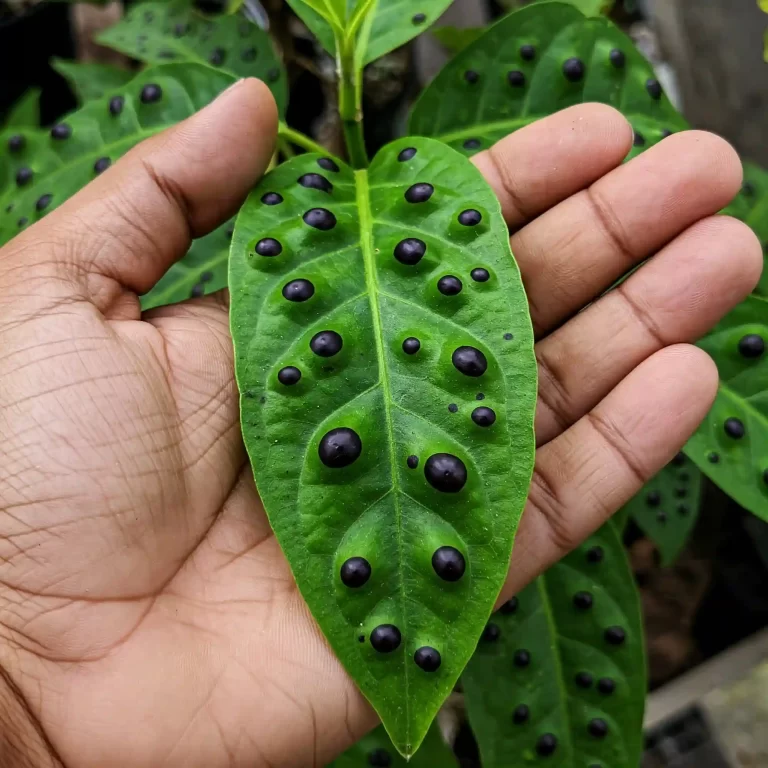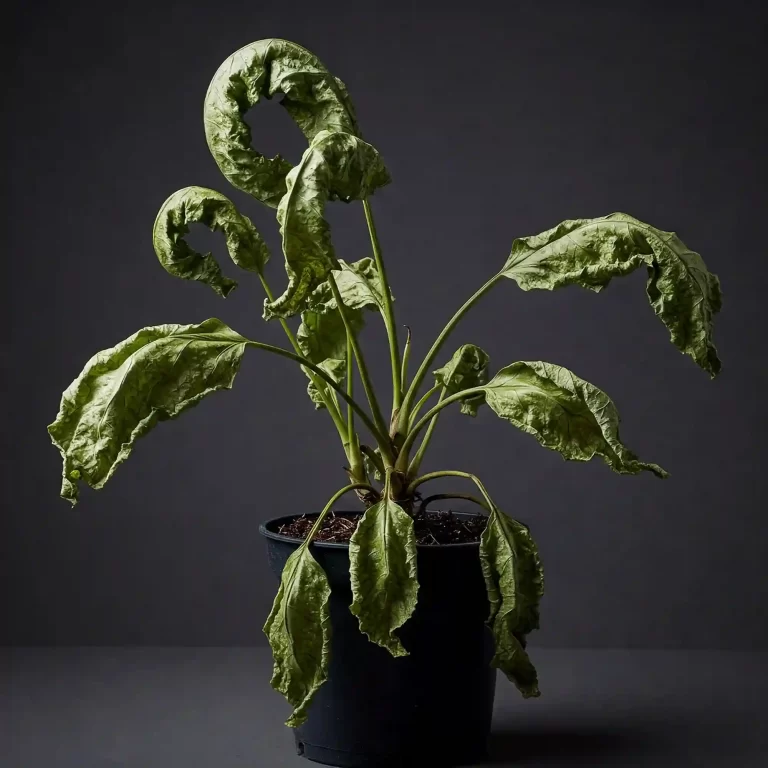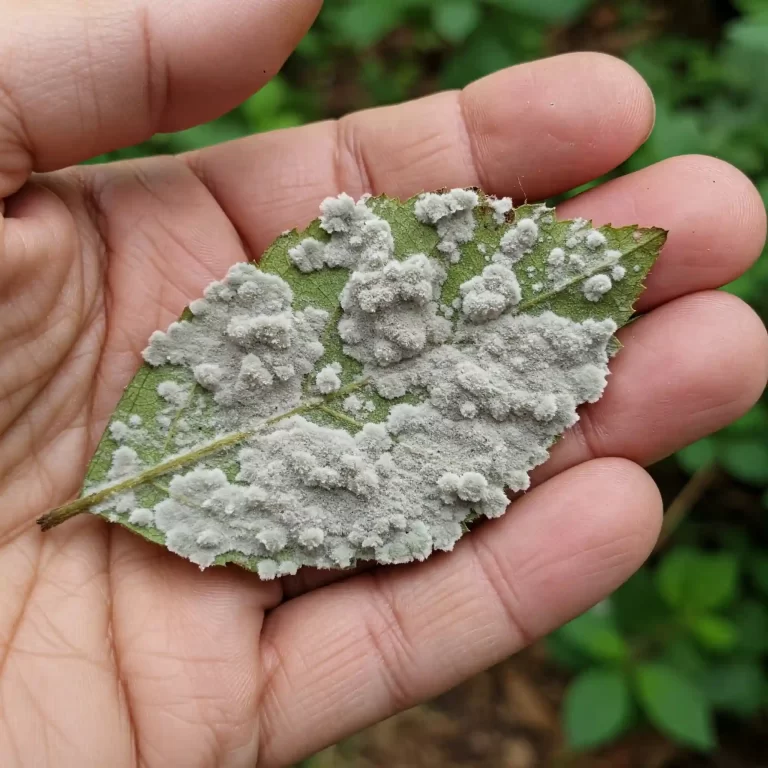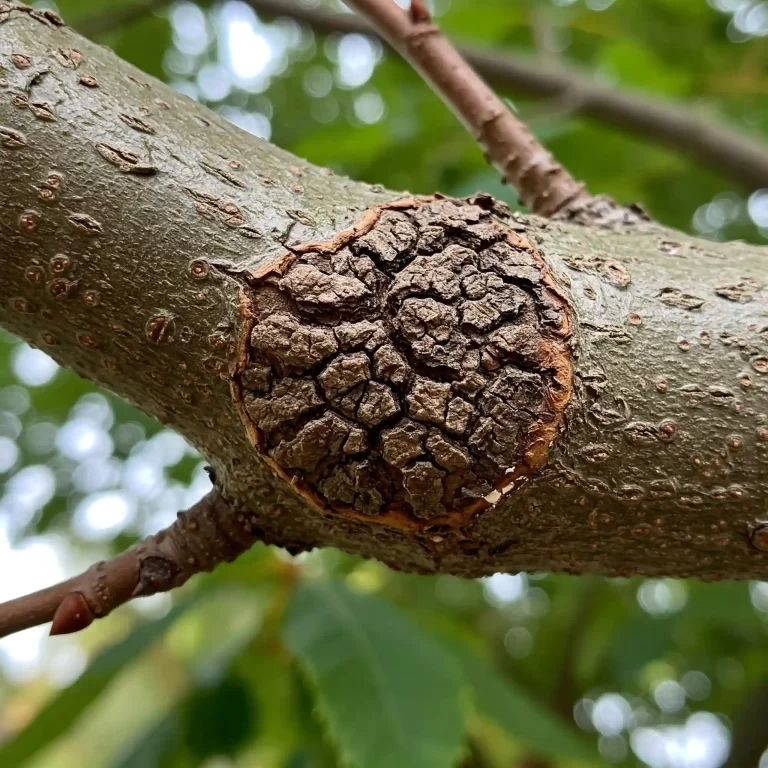| – The ruby necklace plant is a stunning and easy-to-care-for succulent that can add a splash of color and charm to any indoor or outdoor garden. |
| – The ruby necklace plant can be grown from seeds, cuttings, or division, and requires well-draining, acidic, and nutrient-rich soil, bright and direct light, sparing and thorough water, and occasional and balanced fertilizer. |
| – The ruby necklace plant can be pruned to maintain its shape and size, remove any dead or diseased parts, encourage new growth and branching, and obtain more cuttings for propagation. |
| – The ruby necklace plant can be affected by pests, diseases, and environmental stress, and should be prevented or treated by proper care and hygiene. |
Did you know that you can grow your own ruby necklace at home? No, I’m not talking about the expensive jewelry, but the beautiful succulent plant that can turn from green to red depending on how you treat it. The ruby necklace plant, also known as string of rubies, string of pickles, or Othonna capensis, is a trailing succulent with oval-shaped leaves and reddish-purple stems that turn bright ruby red when stressed. It also produces yellow flowers and edible berries that attract birds and butterflies.
The ruby necklace plant is not only stunning, but also easy to care for. It can survive in dry and sunny conditions, and does not need much water or fertilizer. It can also purify the air, heal wounds, and add flavor to salads and soups. It is a perfect plant for beginners and experts alike, and can be grown indoors or outdoors, in pots or hanging baskets, as a ground cover or a focal point.
In this article, you will learn everything you need to know about how to grow and care for your ruby necklace plant, including the best soil, light, water, fertilizer, pests and diseases, propagation, pruning, and more. Read on to discover how to make your ruby necklace plant shine like a jewel in your garden.
What is a Ruby Necklace Plant?
The ruby necklace plant is a type of succulent that has thick, fleshy parts that store water and can survive in dry conditions. It belongs to the daisy family, and is native to South Africa, where it grows in rocky slopes and sandy plains. It has adapted to the harsh environment by developing colorful leaves and stems that can reflect the sunlight and protect the plant from heat and drought.
The ruby necklace plant has oval-shaped leaves that are about an inch long and half an inch wide. They are green in color, but can turn red, purple, or pink when the plant is exposed to bright light or low temperatures. The leaves are arranged along thin and flexible stems that can grow up to three feet long and trail over the edges of the pot or basket. The stems are also green, but can turn reddish-purple or ruby red when the plant is stressed or happy.
The ruby necklace plant produces small and daisy-like flowers that are yellow in color and have a sweet fragrance. The flowers bloom in spring and summer, and last for a few days. They are followed by round and fleshy fruits that are green or red in color and contain black seeds. The fruits are edible and have a sour taste, similar to a pickle. They can be eaten raw or cooked, and are rich in vitamin C and antioxidants.
The ruby necklace plant has many common names, such as string of rubies, string of pickles, or Othonna capensis. The name string of rubies comes from the resemblance of the plant to a necklace of precious stones, while the name string of pickles comes from the shape and taste of the fruits. The name Othonna capensis comes from the Latin words for ear (otho) and cape (capensis), referring to the shape of the leaves and the origin of the plant.
The ruby necklace plant also has some meaning and symbolism, such as love, passion, courage, and creativity. It is said that the plant can attract positive energy and ward off evil spirits. It is also a symbol of resilience and adaptability, as it can thrive in harsh and changing conditions.
How to Grow Ruby Necklace Plant
The ruby necklace plant can be grown from seeds, cuttings, or division. Here are some steps on how to propagate ruby necklace plant using each method:
Seeds
- To grow ruby necklace plant from seeds, you will need some fresh and ripe fruits from the plant, a shallow tray, a well-draining and acidic soil mix, and a light layer of sand or perlite.
- Cut the fruits open and extract the seeds. Rinse the seeds and let them dry for a day or two.
- Fill the tray with the soil mix and moisten it lightly. Sprinkle the seeds evenly over the soil and cover them with a thin layer of sand or perlite. Press the seeds gently into the soil.
- Place the tray in a warm and bright location, but avoid direct sunlight. Cover the tray with a plastic wrap or a glass lid to create a humid environment. Mist the tray lightly every day to keep the soil moist, but not soggy.
- The seeds should germinate in about two to four weeks. Once they sprout, remove the cover and move the tray to a brighter spot, but still avoid direct sunlight. Water the seedlings sparingly and carefully, as they are very delicate and prone to rotting.
- When the seedlings have developed two or three pairs of leaves, you can transplant them to individual pots. Choose small and shallow pots with drainage holes, and fill them with fresh and well-draining soil. Carefully lift the seedlings with a spoon or a fork, and plant them in the pots. Water them well and place them in a bright and warm spot.
Cuttings
- To grow ruby necklace plant from cuttings, you will need some healthy and mature stems or leaves from the plant, a sharp and sterilized scissors, shears, or knife, a paper towel, a well-draining and acidic soil mix, and a pot or a basket with drainage holes.
- Choose a stem or a leaf that is about three to six inches long and has at least three or four nodes or leaves. Cut the stem or the leaf at an angle, about an inch or two below a node or a leaf. Remove the lower leaves from the cutting, leaving only one or two at the top.
- Place the cutting on a paper towel and let it dry and callous for a day or two. This will prevent the cutting from rotting or getting infected.
- Fill the pot or the basket with the soil mix and moisten it lightly. Make a hole in the soil and insert the cutting into the hole. Press the soil around the cutting to secure it. Water the cutting well and place it in a bright and warm spot, but avoid direct sunlight.
- The cutting should root in about two to four weeks. You can check the rooting progress by gently tugging the cutting. If you feel some resistance, it means that the cutting has rooted. You can also look for new growth or buds on the cutting, which indicate that the cutting is healthy and growing.
Division
- To grow ruby necklace plant from division, you will need a mature and crowded ruby necklace plant, a sharp and sterilized scissors, shears, or knife, a well-draining and acidic soil mix, and a pot or a basket with drainage holes.
- Remove the ruby necklace plant from its original pot or basket and shake off the excess soil. Examine the plant and look for natural divisions or clusters of stems and leaves. Cut the plant into smaller sections, making sure that each section has at least one or two healthy stems and leaves. Discard any dead, damaged, or diseased parts of the plant.
- Fill the pot or the basket with the soil mix and moisten it lightly. Plant the sections in the pot or the basket, leaving some space between them. Press the soil around the sections to secure them. Water the sections well and place them in a bright and warm spot, but avoid direct sunlight.
- The sections should establish in about two to four weeks. You can check the establishment progress by looking for new growth or buds on the sections, which indicate that the sections are healthy and growing.
Here are some tips and tricks on how to ensure successful propagation of ruby necklace plant:
- The best time and season for propagation is spring or summer, when the plant is actively growing and can heal faster.
- To increase the chances of germination or rooting, you can use a heat mat, a plastic cover, or a germination kit to provide warmth and humidity to the seeds or cuttings.
- To avoid common propagation problems, such as rotting, wilting, or fungal infections, you should use fresh and healthy materials, sterilize the tools, let the cuttings dry and callous, use well-draining and acidic soil, and avoid overwatering or underwatering.
How to Care for Ruby Necklace Plant
The ruby necklace plant is easy to care for, as it does not need much attention or maintenance. However, it does have some optimal conditions and requirements that you should provide to keep it healthy and happy. Here are some details on how to care for ruby necklace plant, such as soil, light, water, fertilizer, pests and diseases, and environmental stress.
Soil
The ruby necklace plant needs well-draining, acidic, and nutrient-rich soil to grow and thrive. The soil should have a pH between 6.0 and 6.5, and should not retain too much moisture or become compacted. You can use a commercial cactus and succulent soil mix, or make your own by adding perlite, sand, or pumice to regular potting soil. These materials will improve the drainage and aeration of the soil, and prevent root rot and fungal infections.
You should also choose a suitable container for your ruby necklace plant, such as a pot or a basket with drainage holes. The container should be large enough to accommodate the growth of the plant, but not too big or deep, as this can cause the soil to dry out slowly and increase the risk of overwatering. You should also avoid using metal or plastic containers, as they can heat up or retain water, and damage the roots of the plant.
You should repot your ruby necklace plant every year or two, or whenever the plant becomes root-bound or outgrows its container. To repot your ruby necklace plant, you should follow these steps:
- Choose a new container that is slightly larger and has drainage holes.
- Fill the container with fresh and well-draining soil mix, and leave some space at the top for watering.
- Remove the ruby necklace plant from its old container and shake off the excess soil. Examine the roots and trim any dead, damaged, or diseased ones.
- Place the ruby necklace plant in the new container and adjust its position. Fill the gaps with more soil and press it firmly around the plant. Water the plant well and let the excess water drain out.
- Place the plant in a bright and warm spot, but avoid direct sunlight for a few days, as the plant may be stressed or shocked by the repotting process.
Light
The ruby necklace plant loves bright and direct light, and can grow well in a south-facing window or under a strong grow light. The more light it gets, the more red the leaves and stems will turn, and the more flowers and fruits it will produce. However, you should also be careful not to expose the plant to too much or too intense light, as this can cause sunburn or scorching of the leaves and stems. You can tell if the plant is getting too much light by looking for signs such as brown or black spots, curling or shriveling of the leaves, or fading or bleaching of the color.
You should also provide some shade or protection to your ruby necklace plant during the hottest hours of the day, especially in summer, when the sun is at its peak. You can use a sheer curtain, a screen, or a cloth to filter the light and reduce the heat. You can also move the plant to a cooler or shadier spot, such as a north-facing window, a porch, or a balcony.
You should also monitor the light levels and adjust them according to the seasons and the weather. In winter, when the days are shorter and the light is weaker, you should move the plant closer to the window or the light source, or increase the duration or intensity of the artificial light. In spring and fall, when the days are longer and the light is moderate, you should keep the plant in its usual spot, or move it slightly away from the window or the light source, to avoid sudden changes or fluctuations in the light.
Water
The ruby necklace plant is drought-tolerant and does not like to be overwatered. You should let the soil dry out completely between waterings, and then water thoroughly until the excess water drains out. Avoid letting the plant sit in water, as this can cause root rot and fungal infections. You should also avoid splashing water on the leaves and stems, as this can cause them to rot or get infected.
You should water your ruby necklace plant sparingly and carefully, as it is better to underwater than to overwater it. You can check the soil moisture by using a finger, a wooden stick, or a moisture meter. If the soil feels dry to the touch, or if the stick or the meter comes out clean, it means that the plant needs water. If the soil feels moist or wet, or if the stick or the meter comes out with soil attached, it means that the plant does not need water.
You should also water your ruby necklace plant according to the seasons and the weather. In summer, when the temperature is high and the evaporation is fast, you should water the plant more frequently and generously, but still let the soil dry out between waterings. In winter, when the temperature is low and the evaporation is slow, you should water the plant less often and sparingly, and let the soil dry out for longer periods between waterings. In spring and fall, when the temperature and the evaporation are moderate, you should water the plant normally and regularly, and let the soil dry out slightly between waterings.
Fertilizer
The ruby necklace plant is not a heavy feeder, but it can benefit from some fertilization during the growing season. You can use a balanced or a succulent fertilizer once a month from spring to fall, and avoid fertilizing in winter, when the plant is dormant. You should also dilute the fertilizer with water, following the instructions on the label, and water the plant before and after fertilizing, to prevent root burn or nutrient imbalance.
You should also avoid overfertilizing or underfertilizing your ruby necklace plant, as this can cause problems such as weak or leggy growth, yellowing or dropping of the leaves, or lack of flowers or fruits. You can tell if the plant is overfertilized by looking for signs such as brown or black tips or edges of the leaves, or a white or crusty layer on the soil surface. You can tell if the plant is underfertilized by looking for signs such as pale or dull color of the leaves and stems, or slow or stunted growth.
You should also choose the right type and amount of fertilizer for your ruby necklace plant, depending on the soil, the light, and the water conditions. If the soil is poor or depleted, the light is low or indirect, or the water is hard or alkaline, you should use a higher-nitrogen or a higher-phosphorus fertilizer, to boost the growth or the flowering of the plant. If the soil is rich or fresh, the light is high or direct, or the water is soft or acidic, you should use a lower-nitrogen or a lower-phosphorus fertilizer, to balance the growth or the flowering of the plant.
Here are some common problems and solutions for ruby necklace plant, such as pests and diseases, and environmental stress.
Pests and diseases
The ruby necklace plant is generally pest-free, but it can sometimes attract mealybugs, aphids, or spider mites. These are small and sap-sucking insects that can damage the plant by feeding on its leaves and stems, and spreading diseases or viruses. You can identify these pests by looking for signs such as white cottony masses, sticky honeydew, webbing, yellowing, wilting, or blackening of the leaves and stems.
You can prevent or treat these pests by spraying the plant with insecticidal soap or neem oil, or using systemic or contact pesticides. You should also isolate the infected plant from other plants, and remove any dead or diseased parts of the plant. You should also keep the plant clean and healthy, and avoid overwatering or overcrowding it.
The ruby necklace plant can also suffer from fungal diseases if it is overwatered or kept in humid conditions. These are caused by microorganisms that can infect the plant by entering through its wounds or pores, and cause rotting or wilting of the leaves and stems. You can identify these diseases by looking for signs such as brown or black spots, soft or mushy texture, or foul odor of the leaves and stems.
You can prevent or treat these diseases by using fungicides or antifungal agents, or applying cinnamon or baking soda to the affected areas. You should also improve the drainage and aeration of the soil, and reduce the frequency and amount of water. You should also provide good air circulation and ventilation to the plant, and avoid splashing water on the leaves and stems.
Environmental stress
The ruby necklace plant can be affected by environmental factors that can affect its health and growth, such as temperature, humidity, air circulation, and pollution. You should avoid or cope with these factors by following these tips:
- Temperature: The ruby necklace plant can tolerate a wide range of temperatures, from 40°F to 90°F, but it prefers a warm and dry climate. It can survive the cold, but it cannot withstand frost or freezing. You should protect the plant from extreme temperatures, by moving it indoors or outdoors, or covering it with a cloth or a plastic sheet, depending on the season and the weather.
- Humidity: The ruby necklace plant can tolerate low to moderate humidity, but it does not like high humidity. It can suffer from fungal diseases or rotting if the air is too moist or damp. You should keep the plant in a dry and well-ventilated area, and avoid misting or humidifying it. You should also use a dehumidifier or a fan to reduce the humidity level, if necessary.
- Air circulation: The ruby necklace plant can benefit from good air circulation, as it can prevent pests and diseases, and improve the gas exchange and the photosynthesis of the plant. You should provide enough space and distance between the plant and other plants or objects, and avoid crowding or blocking it. You should also use a fan or a window to create some airflow and breeze around the plant, but avoid strong or direct wind that can damage or dry out the plant.
- Pollution: The ruby necklace plant can suffer from pollution, such as smoke, chemicals, or salt, that can harm the plant by burning, staining, or corroding its leaves and stems. You should keep the plant away from sources of pollution, such as fireplaces, stoves, cars, or roads, and avoid spraying or applying any substances that can be toxic or harmful to the plant, such as pesticides, herbicides, or cleaners. You should also clean the plant regularly, by wiping or washing its leaves and stems with a damp cloth or a mild soap solution, to remove any dust or dirt that can accumulate on the plant.
How to Prune Ruby Necklace Plant
The ruby necklace plant can be pruned to maintain its shape and size, remove any dead or diseased parts, encourage new growth and branching, and obtain more cuttings for propagation. Here are some steps on how to prune ruby necklace plant:
- Choose a sharp and sterilized scissors, shears, or knife, and wear gloves to protect your hands.
- Cut the stems at an angle, about an inch or two above a node or a leaf. You can cut as much or as little as you want, depending on how long or leggy the plant is, and how you want it to look. You can also cut the leaves in half or in thirds, if they are too large or crowded.
- Dispose of the pruned materials, or use them for propagation, following the steps in the previous section.
- Water the plant well and let the excess water drain out. Place the plant in a bright and warm spot, but avoid direct sunlight for a few days, as the plant may be stressed or shocked by the pruning process.
You should prune your ruby necklace plant once or twice a year, or whenever the plant becomes too long or unruly. The best time and season for pruning is spring or summer, when the plant is actively growing and can heal faster.
Conclusion
The ruby necklace plant is a beautiful and easy-to-care-for succulent that can add a touch of color and charm to any indoor or outdoor garden. It can be grown from seeds, cuttings, or division, and requires well-draining, acidic, and nutrient-rich soil, bright and direct light, sparing and thorough water, and occasional and balanced fertilizer. It can also be pruned to maintain its shape and size, remove any dead or diseased parts, encourage new growth and branching, and obtain more cuttings for propagation. It can also be affected by pests, diseases, and environmental stress, and should be prevented or treated by proper care and hygiene.
We hope this article has helped you learn how to grow and care for your ruby necklace plant, and make it shine like a jewel in your garden. If you have any questions, feedback, or experience on growing and caring for ruby necklace plant, please feel free to share them with us in the comments section below. We would love to hear from you and help you out.
If you enjoyed this article and want to learn more about other succulents and plants, please check out our other articles and resources on our website, or subscribe to our newsletter or social media channels to get the latest updates and tips on gardening.
Thank you for reading and happy gardening!



